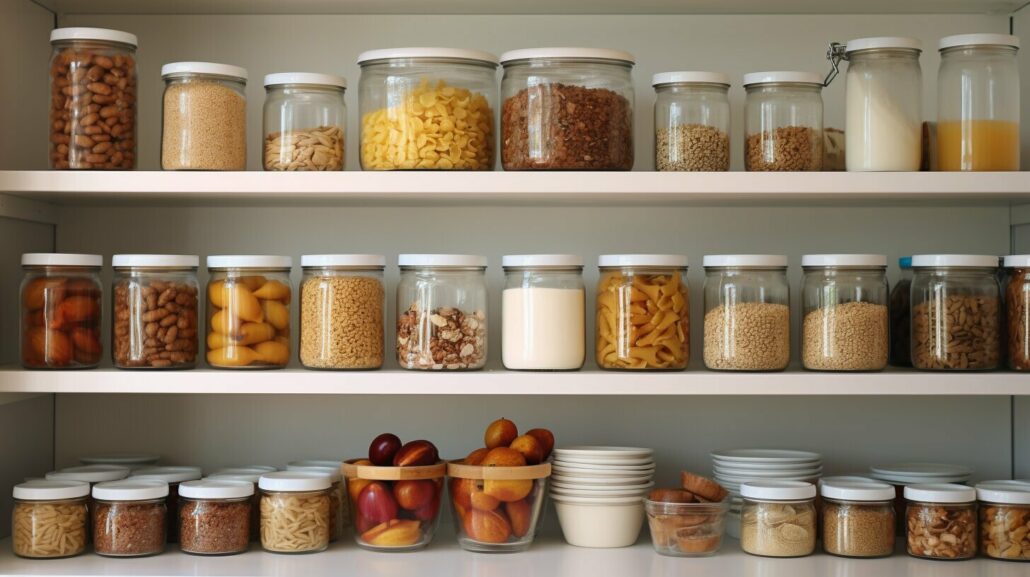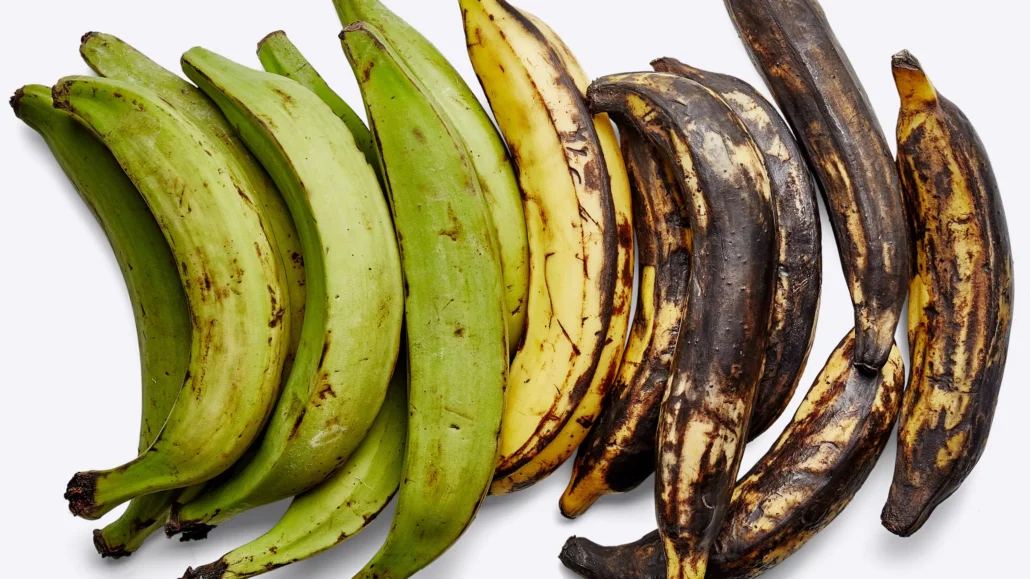Creating a well-stocked prepper pantry can make all the difference during times of emergency or crisis. The key to success lies in selecting prepper pantry essentials that not only last for extended periods of time but also meet nutritional needs. This combination can provide a strong foundation of survival food essentials, ensuring that any emergency food supply remains both durable and nourishing. In this guide, we outline 30 must-have items to help you build a collection of long-lasting food supplies and versatile, non-perishable food items that can sustain you and your family during those critical moments.
Key Takeaways:
- Choose prepper pantry essentials offering both long shelf life and nutritional benefits.
- Invest in survival food essentials that are easy to store and prepare.
- Hydration is as important as food during emergencies, so stock up on water and alternatives.
- Rotate your emergency food supply with the First In, First Out (FIFO) method for optimal efficiency.
- Pay attention to the nutritional balance of your prepper pantry, including proteins, carbs, and fats.
- Ensure variety in your long-lasting food supplies with different grains, legumes, canned meats, and plant-based options.
- Proper storage and organization are crucial for maintaining the quality and longevity of non-perishable food items.
Understanding the Prepper Pantry Mindset
The prepper pantry mindset revolves around the careful selection of food that is not only long-lasting but also easy to store and prepare. Shelf-stable or non-perishable foods that don’t require refrigeration until after opening fall into this category. The concept also emphasizes the need to be careful with space, aiming to concentrate nutrition in compact forms.
“Prepping for survival means being ready for anything.”
In addition to selecting food that lasts, it’s crucial to follow proper food rotation practices such as the FIFO method, ensuring foods are consumed before their expiration. The USDA defines “shelf-stable” as those items that can be safely stored at room temperature. Continuing to be mindful of the five enemies of shelf life—heat, light, moisture, pests, and oxygen—is critical in maintaining the longevity and safety of stored foods.
Emergency Pantry Planning
Effective emergency pantry planning includes:
- Assessing storage requirements and available space.
- Creating a list of stockpile essentials based on dietary needs and preferences.
- Prioritizing shelf-stables foods with a long shelf life.
- Considering packaging of the products for optimal space usage.
- Implementing and maintaining a food rotation system like FIFO.
| Enemy of Shelf Life | Possible Consequences | Prevention Tips |
|---|---|---|
| Heat | Decreased nutritional value and taste, increased spoilage. | Store food in cool, dry places away from direct sunlight and heat sources. |
| Light | Decreased vitamin content of foods, discoloration, and deterioration. | Use opaque containers and keep food away from natural or artificial light. |
| Moisture | Encourages mold growth and food spoilage. | Ensure proper sealing of containers and use desiccant packs or silica gel as needed. |
| Pests | Infestation and damage to food stocks. | Store food in pest-resistant containers and keep the pantry area clean. |
| Oxygen | Promotes the growth of aerobic organisms and oxidation of fats and vitamins. | Use vacuum-sealed or oxygen-absorber-equipped packages, and seal containers tightly. |
By adopting the prepper pantry mindset and paying close attention to the factors that affect food longevity, you’ll be better prepared to face any emergency with a reliable and well-organized food supply.
Fueling Survival: The Role of Calories and Nutrition
In times of crisis, it is paramount to focus on calorie-rich and nutrient-dense foods that meet the increased energy requirements due to potentially higher physical demands. Understanding the importance of high-energy survival foods and balanced nutrition for survival is crucial for effective prepper pantry planning.
High-Energy Foods for High-Stress Times
Items such as peanut butter, which is rich in healthy fats and protein, and energy bars that offer a mix of carbs and protein, are essential for quick energy supply. Similarly, cereals with minimal added sugar but high in fiber can keep one fuller for longer, hence being a solid choice for a high-energy prepper food.
“Nutrition in emergencies requires an emphasis on calorie-dense prepper items that can sustain us both physically and mentally.”
The Nutritional Balance: Protein, Carbs, and Fats
For maintaining a balanced diet during emergencies, it is important to include a variety of macronutrients in the prepper pantry, such as protein sources, carbohydrates, and fats for emergencies. Emergency food items should ideally contain fiber, essential nutrients, and sufficient calories.
- Protein Sources: canned meats, beans, lentils, nuts, and seeds.
- Carbohydrates: whole grains, pasta, rice, and cereals.
- Fats: healthy oils, avocados, and nuts.
Experts suggest aiming for foods that provide a diversity of nutrients and are capable of satiating hunger effectively while keeping dietary habits as normal as possible.
| Category | Examples | Benefits |
|---|---|---|
| Protein Sources | Canned meats, beans, lentils, nuts, and seeds | Support muscle growth and repair, provide essential amino acids |
| Carbohydrates | Whole grains, pasta, rice, and cereals | Provide energy, support brain function, aid in digestion |
| Fats | Healthy oils, avocados, and nuts | Provide energy, support cell function, assist in nutrient absorption |
By prioritizing high-energy survival foods and ensuring a balance of protein sources, carbohydrates and fats for emergencies, you will be better equipped to meet the nutritional demands during times of crisis.
Shelf-Stable Staples: Grains and Legumes
Grains and legumes are crucial pantry staples for prepping, providing nutritional benefits, storage longevity, and culinary versatility. Shelf-stable grains such as rice, oats, quinoa, and pasta are particularly prized for their storage stability with many types maintaining their quality for years when stored properly. Long-lasting legumes, including various beans and lentils, are valued for their protein and fiber content. They are essential in creating complete proteins when paired with grains and can be packed in ways to optimize space efficiency in storage.
When assembling a diverse yet efficient prepper pantry, understanding the advantages of specific grains and legumes is important. Below are some popular choices and their benefits:
- Rice: Easy to cook and versatile, rice provides a source of complex carbohydrates. Brown rice contains added nutritional benefits while white rice has a longer shelf life.
- Oats: Rich in fiber and minerals, oats are slow-digesting, making you feel full for a longer period. They can be enjoyed as a breakfast staple or used in various recipes.
- Quinoa: A complete protein source, quinoa is packed with nutrients and pairs well with legumes and vegetables. It is also naturally gluten-free.
- Pasta: Made from wheat, pasta is calorie-dense and shelf-stable with whole wheat pasta providing more fiber and nutrients.
- Beans: Available in many varieties, beans are an excellent source of protein, fiber, and essential nutrients. They can be purchased dry or canned and are space-efficient in storage.
- Lentils: An affordable source of protein and fiber, lentils can be paired with grains for a complete protein. Easy to store and quick to cook, they are a valuable addition to your pantry.
Regardless of the grains and legumes selected, proper storage is essential. Storing grains and legumes in airtight containers with oxygen absorbers in a cool, dry place away from light maintains their quality for years. This is crucial in ensuring an effective emergency pantry that is both nutritionally balanced and efficient.
“Shelf-stable grains and long-lasting legumes provide a solid foundation for a well-rounded prepper pantry.”
Must-Have Proteins: Canned Meats and Plant-Based Options
When it comes to prepping, stocking up on nutrient-rich protein sources is essential for maintaining strength, muscle, and overall health during emergencies. Both animal-based and plant-based protein options have their role in a balanced prepper pantry. Let’s explore two popular choices for long-lasting, protein-rich foods suitable for emergency situations: canned seafood and versatile legumes.
Seafood: A Nutrient-Rich Protein Source
Canned seafood, such as salmon, sardines, and tuna, offers an excellent nutrient-dense protein option for your prepper pantry. Rich in essential vitamins, minerals, and omega-3 fatty acids, seafood is invaluable for maintaining good health during trying times. Plus, its long shelf life makes it an ideal emergency meat option.
Opting for vacuum-packed pouches of seafood can help ensure freshness and preserve taste while also eliminating the need for a can opener. This makes them a practical and valuable addition to your pantry for quick and simple meal preparation.
Note: When selecting canned seafood, look for varieties that have been sustainably caught and verified by organizations such as the Marine Stewardship Council (MSC), to support responsible fishing practices.
Legumes: Versatile and Nutrient-Packed
Legumes, including various beans and lentils, are celebrated for their versatility in recipes, high protein content, and storage practicality. As nutrient-packed prepper foods, they are favored in both dried and canned forms for their extended shelf life and ease of preparation.
Furthermore, legumes play a strategic role in emergency dietary planning as part of a power combo with grains for a complete amino acid profile. For example, traditional dishes like beans and rice exemplify the effectiveness of combining protein-rich pantry items with sources of complex carbohydrates to create a wholesome, long-lasting, and delicious meal.
- Beans – kidney, black, pinto, garbanzo, and more
- Lentils – green, brown, or red
- Split peas – green or yellow
Ultimately, stocking your prepper pantry with a combination of canned meats and plant-based protein options is crucial for ensuring that you have nutrient-rich and protein-dense foods on hand in case of emergencies. By including a variety of canned seafood and versatile legumes in your emergency food supply, you’ll be well-equipped to face any unexpected situation with strength and resilience.
Fats in Your Prepper Pantry: Storage and Health Benefits
Fats are an indispensable part of the prepper pantry, given their long shelf life, health benefits, and necessity for cooking. Items like lard, peanut butter, oils (vegetable, olive, and coconut), and coconut milk not only add essential fatty acids and help in feeling sated but also increase the palatability of meals. In this section, we will discuss the importance of storage of fats, various types of healthy fats for survival, and essential tips for prepping with fats and oils.
Fats play a crucial role in maintaining overall health and providing the body with the energy it needs during emergencies.
Types of Healthy Fats for Survival
When it comes to prepping, it is essential to understand the difference between healthy and unhealthy fats. Some popular healthy fats include:
- Unsaturated fats: Found in plant-based oils such as olive, canola, and sunflower oil
- Omega-3 fatty acids: Common in fatty fish like salmon, walnuts, and flax seeds
- Monounsaturated fats: Present in foods like avocados, almonds, and peanuts
These fats support cardiovascular health, reduce inflammation, and help maintain proper brain function. On the other hand, unhealthy fats like saturated and trans fats can lead to various health issues.
Storage of Fats: Tips and Tricks
For fats to remain safe and fresh for consumption, proper storage is critical. Here are some tips for storing fats and oils:
- Store oils and fats in a cool, dark place away from direct sunlight and heat sources
- Use airtight containers to protect oils from oxidation and pests
- Rotate your oil stock regularly using the First In, First Out (FIFO) method
- Discard oils and fats that have an off smell or appearance, as it may indicate spoilage
| Shelf Life: Unopened | Shelf Life: Opened | |
|---|---|---|
| Olive Oil | 2 years | 1 year |
| Canola Oil | 2 years | 1 year |
| Vegetable Oil | 2 years | 1 year |
| Coconut Oil | 2 years | 18 months |
| Peanut Butter | 2 years | 6 months |
As shown in the table above, various fats and oils have different shelf lives. To ensure the highest quality and safety of your emergency food supply, adhere to the FIFO method, and replace items before they expire.
Incorporating healthy fats and proper storage techniques into your prepper pantry is vital for both nutrition and cooking during emergencies. Prioritize the storage of fats like vegetable, olive, and coconut oil and items such as peanut butter, which provide essential nutrients and improve the taste of your meals during times of crisis.
Hydration Essentials: Water and Alternatives
Hydration is as critical as food in any emergency situation. Stocking a minimum three-day supply of water—at least one gallon per person per day—is essential for survival. However, it is also vital to consider alternatives like electrolyte solutions for emergency hydration.
Electrolyte Solutions for Emergency Hydration
Electrolyte drinks not only replace lost fluids but also maintain essential body functions. Incorporating these solutions into your emergency hydration supplies can make a significant difference in challenging situations. When selecting electrolyte drinks, focus on those with fewer additives and more natural ingredients to ensure minimal side effects and better health outcomes.
Some popular and effective electrolyte drinks available on the market are:
- Pedialyte
- CyteSport
- Nuun Hydration
- Ultima Replenisher
As a part of effective water storage for survival, it is crucial to have a diversified plan. In addition to the standard water supply, consider integrating oral rehydration salts and electrolyte powders to make your own electrolyte drinks when needed. This way, you can quickly create an electrolyte solution if you run out of pre-made options or when water supply is limited.
Remember to stock a minimum three-day supply of water—at least one gallon per person per day—and consider alternatives like electrolyte solutions for emergency hydration.
By incorporating these emergency hydration solutions and incorporating smart water storage practices, you can ensure the safety and well-being of you and your family during unforeseen events.
Picking Your Prepper Produce: Dried Fruits and Veggies
Building a well-stocked prepper pantry requires a careful selection of shelf-stable fruits and vegetables that can satisfy your nutritional needs during unforeseen events. Dried produce for prepping is a versatile and practical choice, offering a wealth of nutrients, a burst of flavors, and an extended shelf life without the need for refrigeration.
Dried fruits and vegetables can not only be portioned for specific recipes but also aid in the preservation of food quality and make for convenient meal planning. To help you get started, here are some popular dried fruits and vegetables as well as their key benefits:
| Dried Fruits | Benefits |
|---|---|
| Raisins | Rich in antioxidants and fiber, great natural sweetener |
| Apricots | High in vitamins A and C, iron, and potassium |
| Prunes | Packed with fiber, vitamins, and minerals; promotes digestion |
| Apples | Good source of vitamin C, fiber, and natural sweetness |
| Dried Vegetables | Benefits |
|---|---|
| Tomatoes | Rich in vitamins A, C, and K, and antioxidants like lycopene |
| Carrots | High in beta carotene, fiber, and vitamin A |
| Peppers | Packed with vitamins A and C, and adds flavor to meals |
| Mushrooms | Good source of vitamins B and D, and minerals like selenium and potassium |
Dried produce can be incorporated into various dishes, from snacks to full-fledged meals, contributing to a well-rounded and healthy prepper pantry. However, it is essential to remember these key points:
- Choose high-quality brands and preferably organic dried fruits and vegetables to ensure maximum nutritional value.
- Opt for produce with no added sugars, sulfites, or artificial preservatives to maintain a healthy and clean diet.
- Store dried foods in a cool, dark, and dry place to maximize shelf life.
“Just like fresh produce, the nutritional content of dried fruits and vegetables varies. Thus, it is crucial to include a diverse selection to ensure a balanced diet.”
In conclusion, including a variety of shelf-stable fruits and vegetables in your prepper pantry not only ensures your body’s nutritional needs are met, but also enhances the flavor of your meals during emergencies.
Long-Lasting Flavor: Herbs, Spices, and Seasonings
A well-stocked prepper pantry aims to provide not only sustenance but also comfort and variety during emergency situations. An essential component of any flavorful prepper pantry is the inclusion of long-lasting herbs and spices to elevate the taste profiles of your meals and contribute to overall satisfaction during stressful times.
When properly stored in cool, dark places, herbs and spices can last for years, maintaining their potency and freshness. Introducing a selection of these items into your pantry allows for an easy yet powerful way to diversify and enhance the overall enjoyment and nutrition of your emergency food supply.
Keeping Meals Tasty: The Value of Variety
Building variety in your emergency food supply helps ensure that you have exciting flavors and ingredients on hand to create flavorful meals even in the most challenging circumstances. Consider incorporating a range of herbs, spices, and seasonings that cater to various cuisines and preferences for a diversified and enjoyable culinary experience.
- Herbs: Basil, oregano, rosemary, thyme, parsley
- Spices: Cumin, paprika, turmeric, chili powder, cinnamon
- Seasoning blends: Italian seasoning, curry powder, taco seasoning, Old Bay, Cajun seasoning
It’s worth noting that you should regularly check the freshness and quality of your herbs and spices. While they may not necessarily “expire,” they can lose their potency over time, and some may be more sensitive to changes in temperature or humidity.
“The key to a flavorful prepper pantry is investing in a variety of long-lasting herbs and spices that can elevate your emergency meals and contribute to overall comfort during stressful times.”
By thoughtfully curating your prepper pantry with a diverse array of long-lasting herbs and spices, you ensure that you can create not just nutritious, but also tasty and enjoyable meals when faced with an emergency situation. Maintain the quality of your pantry and keep your emergency food supply fresh and flavorsome by systematically rotating your stock and storing items in optimal conditions.
Smart Shopping for Your Survival Food List
As a prepper, smart shopping for your survival food list involves not just finding the best deals, but also ensuring that the food items purchased have a maximal shelf life. Examining expiration dates and focusing on bulk, long-lasting items can allow for more value over time. Consumers should be aware of varying longevity among different foods and incorporate space-saving and nutritionally dense items like calorie-rich beans compared to the less-space-efficient alternatives.
Finding the Best Deals and Maximizing Shelf Life
To maximize your food shelf life and find the best deals on survival foods, consider the following tips:
- Compare prices: Research prices online and at local stores to find the best deals on essential prepper foods. You’ll often find better deals when you buy in bulk, so keep an eye out for such opportunities.
- Buy in bulk: Bulk buying not only saves money, but it can also optimize your storage space. Prioritize items with a longer shelf life, like dried beans, grains, and canned goods, when shopping in bulk.
- Utilize sales and discounts: Take advantage of sales events, clearance items, and coupons to purchase prepper foods at discounted prices. Make sure to check expiration dates carefully, as discounted items might have shorter shelf lives.
- Check expiration dates: Before purchasing any food item, always check the expiration or “best by” date to ensure its longevity and maximize the shelf life in your pantry.
- Store food properly: Make sure to store your food items in ideal conditions. This includes preventing exposure to heat, light, moisture, pests, and oxygen.
Let’s take a closer look at some long-lasting items and their average shelf life when stored properly:
| Food Item | Average Shelf Life |
|---|---|
| Dried Beans | 2-3 years |
| Rice | 2-5 years |
| Whole Grains (e.g., barley, quinoa, oats) | 1-2 years |
| Pasta | 1-2 years |
| Dehydrated Fruits and Vegetables | 1-2 years |
| Canned Fruits and Vegetables | 1-5 years |
When comparing shelf life, you can clearly see the advantage of stocking up on calorie-rich beans, grains, and other long-lasting items.
Ultimately, smart prepper shopping requires a balance between finding the best deals on survival foods and maximizing food shelf life in your pantry. The key is to prioritize long-lasting, nutritionally dense items that can sustain you during emergencies.

Storing Your Prepper Food Stash: Tips and Tricks
Implementing proper storage strategies is key to maintaining the longevity of your prepper pantry. In order to protect your food stash from the enemies of shelf life—heat, light, moisture, pests, and oxygen—it is essential to utilize appropriate containers such as Mylar bags with oxygen absorbers and sealed buckets. These methods of storage not only extend the life of various foods but also help in optimizing pantry space by allowing for a more organized and accessible system.
Transparent labeling practices are vital in effectively managing your food supply. By clearly marking storage containers with the contents, acquisition date, and expiration date, you ensure efficient rotation of your stock. Adhering to the FIFO (First In, First Out) method, which promotes using up older items before opening new ones, goes a long way in minimizing waste and getting the most value out of your food supply.
Maximizing the utility of every item in your pantry is a key aspect of successful prepper food storage. By employing room temperature storage solutions, long-term food preservation techniques, and proper rotation practices, you can build a reliable, diverse, and space-efficient food stash capable of sustaining you and your loved ones during emergency situations.









